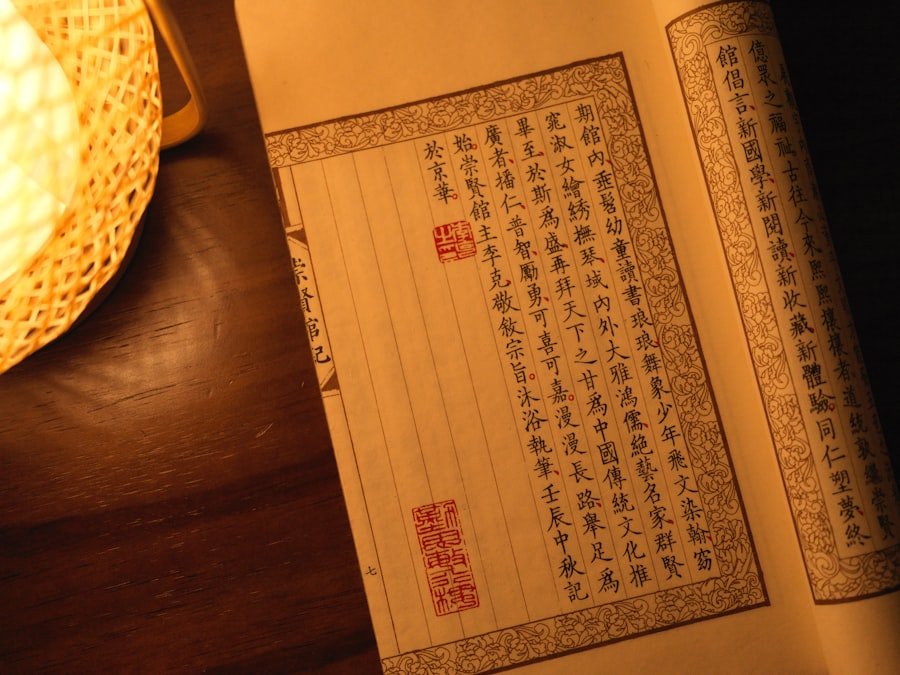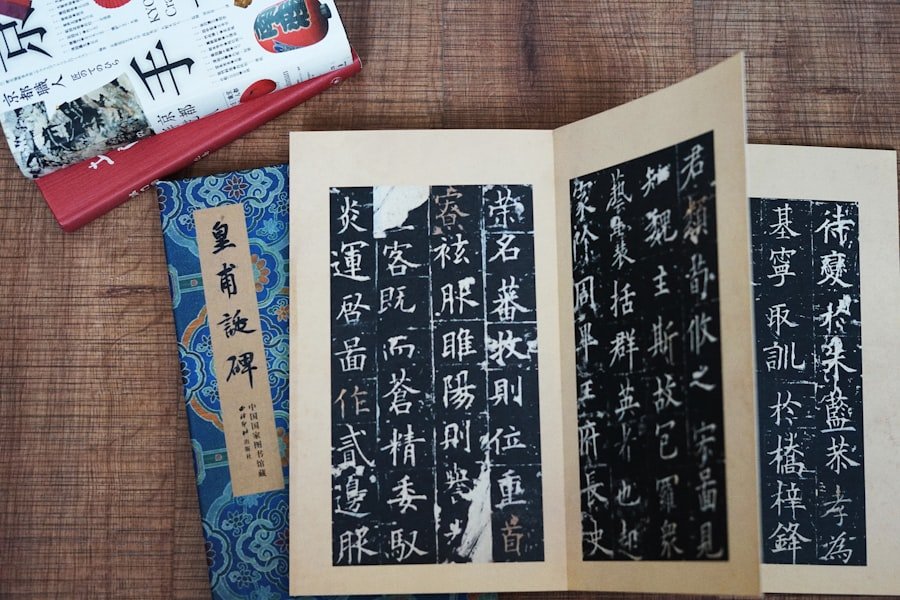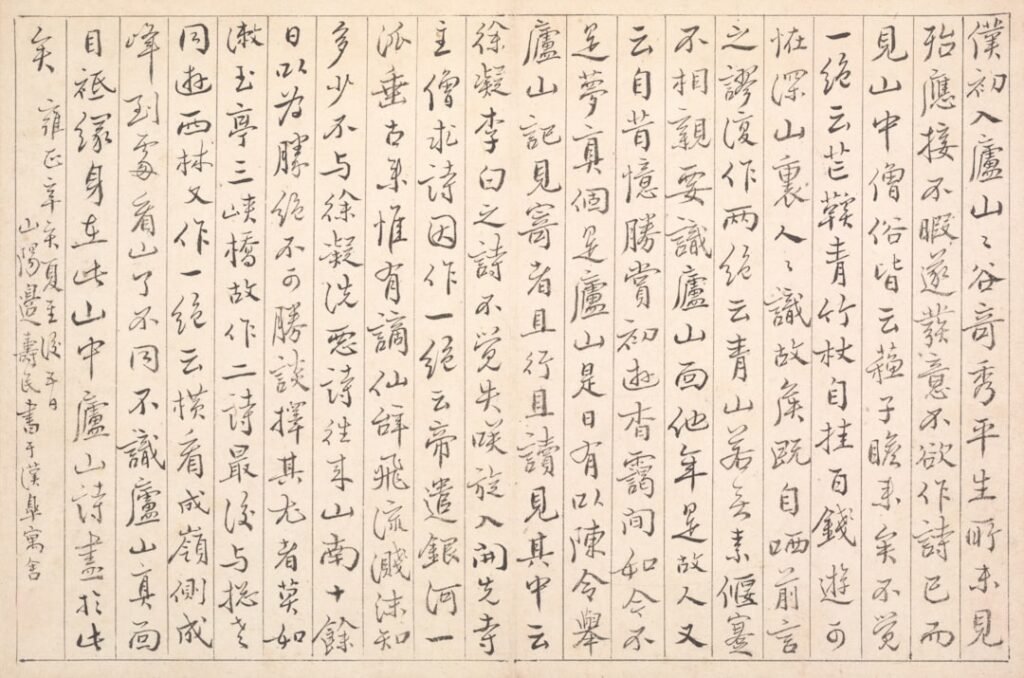Chinese calligraphy is not merely a form of writing; it is an art that embodies the essence of Chinese culture and philosophy. The practice of calligraphy has been revered for centuries, with its roots tracing back to ancient dynasties. At its core, Chinese calligraphic composition involves the arrangement of characters in a manner that is aesthetically pleasing while also conveying meaning.
This intricate art form requires not only technical skill but also a deep understanding of the principles that govern it. As one delves into the world of Chinese calligraphy, they discover a rich tapestry of history, emotion, and expression that transcends mere words. The beauty of Chinese calligraphy lies in its ability to communicate feelings and ideas through the fluidity of brush strokes.
Each character is a work of art, and the way they are composed on the page can evoke a range of emotions. The interplay between ink and paper, along with the rhythm of the brush, creates a visual symphony that captivates the viewer. As we explore the various aspects of Chinese calligraphic composition, we will uncover the significance of zhāng fǎ, the basic principles that guide this art form, and the techniques that can elevate one’s calligraphic practice. Master the art of Chinese calligraphy. Enroll now at the LC Chinese School in Oslo.
Table of Contents
ToggleSummary
- Chinese calligraphic composition is a traditional art form that requires an understanding of Zhāng Fǎ and balance and harmony.
- Zhāng Fǎ is the arrangement of characters on a page, and it is crucial for creating a visually pleasing composition.
- The basic principles of Zhāng Fǎ include the use of space, balance, and harmony to create a sense of rhythm and flow.
- Understanding the role of space in Chinese calligraphic composition is essential for creating a balanced and harmonious layout.
- Different styles of Chinese calligraphic composition have influenced art and design, and understanding these styles can enhance your own compositions.
The Importance of Understanding Zhāng Fǎ
Zhāng fǎ, or the rules of composition in Chinese calligraphy, serves as the foundation upon which all calligraphic works are built. Understanding these principles is crucial for anyone wishing to master the art of calligraphy. Zhāng fǎ encompasses various elements, including the arrangement of characters, the use of space, and the balance between form and content.
By grasping these concepts, practitioners can create compositions that are not only visually appealing but also rich in meaning. The significance of zhāng fǎ extends beyond aesthetics; it reflects the philosophical underpinnings of Chinese culture. The principles of balance and harmony found in zhāng fǎ resonate with traditional Chinese beliefs about nature and existence.
For instance, the concept of yin and yang is mirrored in the way characters are arranged on a page, where contrasting elements come together to create a unified whole. By internalising these principles, calligraphers can infuse their work with deeper meaning and cultural resonance.
The Basic Principles of Zhāng Fǎ

At its core, zhāng fǎ consists of several fundamental principles that guide the arrangement of characters in Chinese calligraphy. One of the most important principles is the concept of balance. A well-composed piece should have a sense of equilibrium, where no single element overpowers another.
This balance can be achieved through careful consideration of character size, spacing, and placement on the page. For instance, larger characters may be offset by smaller ones to create a harmonious composition. Another essential principle is rhythm.
Just as music has a tempo, so too does calligraphy possess a rhythm that can be felt through the flow of brush strokes. The arrangement of characters should create a visual cadence that draws the viewer’s eye across the page. This rhythm can be enhanced by varying the size and style of characters, allowing for a dynamic interplay that keeps the viewer engaged.
By mastering these basic principles, calligraphers can elevate their work from mere writing to a true art form.
Understanding the Balance and Harmony in Calligraphic Composition
Balance and harmony are not just aesthetic considerations; they are integral to the very essence of Chinese calligraphy. A composition that lacks balance may feel chaotic or disjointed, while one that achieves harmony resonates with a sense of peace and unity. To create this balance, calligraphers must consider both visual weight and emotional impact.
For example, a bold character may need to be counterbalanced by lighter strokes or negative space to maintain equilibrium. Harmony in calligraphic composition also involves the relationship between characters and their surroundings. The space around each character plays a crucial role in how it is perceived.
Adequate spacing allows each character to breathe and be appreciated individually while contributing to the overall composition. This delicate interplay between characters and space creates a sense of flow that guides the viewer’s eye through the work, enhancing both its beauty and meaning.
The Role of Space in Chinese Calligraphic Composition
Space is often referred to as “negative space” in art and design, but in Chinese calligraphy, it holds a unique significance. The use of space is not merely an afterthought; it is an essential component that shapes the overall composition. In Chinese calligraphy, empty spaces are as important as filled ones, as they provide context and allow for contemplation.
The strategic use of space can evoke feelings of tranquility or tension, depending on how it is employed. Moreover, space serves to highlight individual characters within a composition. By allowing for adequate breathing room around each character, calligraphers can draw attention to their unique forms and meanings.
This careful consideration of space encourages viewers to engage with each character on a deeper level, fostering a connection between the viewer and the artwork. In this way, space becomes an active participant in the narrative conveyed by the calligraphy.
The Different Styles of Chinese Calligraphic Composition

Chinese calligraphy boasts a rich diversity of styles, each with its own unique characteristics and historical significance. From the elegant strokes of regular script (kǎi shū) to the expressive flourishes of cursive script (xíng shū), each style offers a different approach to composition. Understanding these styles is essential for any aspiring calligrapher, as they provide a framework for exploring personal expression within traditional boundaries.
Regular script is often considered the foundation for learning calligraphy due to its clarity and structure. It serves as an excellent starting point for beginners who wish to grasp the fundamentals of zhāng fǎ. On the other hand, cursive script allows for greater freedom and spontaneity, encouraging artists to express their emotions through fluid brushwork.
Other styles, such as seal script (zhuàn shū) and running script (xíng shū), offer additional avenues for exploration, each contributing to the rich tapestry of Chinese calligraphic tradition.
The Influence of Chinese Calligraphic Composition on Art and Design
The impact of Chinese calligraphic composition extends far beyond traditional writing; it has influenced various forms of art and design throughout history. The aesthetic principles inherent in calligraphy have inspired painters, poets, and designers alike, leading to a fusion of disciplines that enriches Chinese culture as a whole. The fluidity and grace found in calligraphy can be seen in traditional Chinese painting, where brushwork often mirrors calligraphic techniques.
In contemporary design, elements of Chinese calligraphy continue to inspire graphic designers and artists around the world. The elegant forms of characters can be integrated into modern branding, typography, and visual art, creating a dialogue between tradition and innovation. This cross-pollination not only preserves the legacy of Chinese calligraphy but also introduces its beauty to new audiences who may not be familiar with its cultural significance.
Techniques for Arranging Characters on a Page
Arranging characters on a page requires both technical skill and artistic intuition. One effective technique is to consider the flow of movement across the page. Calligraphers often envision an invisible line that guides the viewer’s eye from one character to another, creating a sense of continuity within the composition.
This can be achieved by varying character sizes or using diagonal placements to create dynamic movement. Another technique involves experimenting with different orientations and alignments. While traditional compositions often follow a vertical format, contemporary calligraphers may choose to arrange characters horizontally or even diagonally for added visual interest.
This playful approach allows for greater creativity while still adhering to the principles of zhāng fǎ. By exploring these techniques, calligraphers can develop their unique style while remaining rooted in tradition.
Common Mistakes in Chinese Calligraphic Composition
As with any art form, there are common pitfalls that aspiring calligraphers may encounter in their journey towards mastery. One frequent mistake is neglecting the importance of balance within a composition. Overcrowding a page with too many characters or failing to consider spacing can lead to chaotic results that detract from the overall impact of the work.
It is essential for artists to step back and assess their compositions critically before finalising them. Another common error is overlooking the emotional resonance of characters. Each character carries its own weight and meaning; thus, their arrangement should reflect this significance.
Placing characters without regard for their individual qualities can result in compositions that feel disjointed or lack depth. By taking time to understand each character’s role within a piece, calligraphers can create more cohesive and meaningful works.
Tips for Improving Your Chinese Calligraphic Composition
Improving one’s Chinese calligraphic composition requires dedication and practice, but there are several tips that can facilitate this journey. First and foremost, studying classical works by master calligraphers can provide invaluable insights into effective composition techniques. By analysing how these artists utilise balance, space, and rhythm in their work, aspiring calligraphers can gain inspiration for their own compositions.
Additionally, regular practice is essential for honing one’s skills. Setting aside time each day to experiment with different styles and techniques allows artists to develop their unique voice within the realm of calligraphy. Seeking feedback from peers or instructors can also provide fresh perspectives on one’s work, helping to identify areas for improvement while celebrating successes.
The Art and Beauty of Chinese Calligraphic Composition
In conclusion, Chinese calligraphic composition is an intricate art form that weaves together history, philosophy, and personal expression. Understanding zhāng fǎ is essential for anyone wishing to delve into this captivating world; it provides a framework for creating balanced and harmonious works that resonate with viewers on multiple levels. Through careful consideration of space, rhythm, and style, practitioners can elevate their compositions from mere writing to profound artistic statements.
For those eager to explore this beautiful art form further, LC Chinese School in Oslo offers specialised courses in Chinese calligraphy that cater to all skill levels. These courses provide an opportunity not only to learn about zhāng fǎ but also to engage with experienced instructors who can guide students through their artistic journey. Whether you are a complete novice or an experienced practitioner looking to refine your skills, LC Chinese School provides an enriching environment where you can immerse yourself in the art and beauty of Chinese calligraphic composition.
Master the art of Chinese calligraphy. Enroll now at the LC Chinese School in Oslo.







